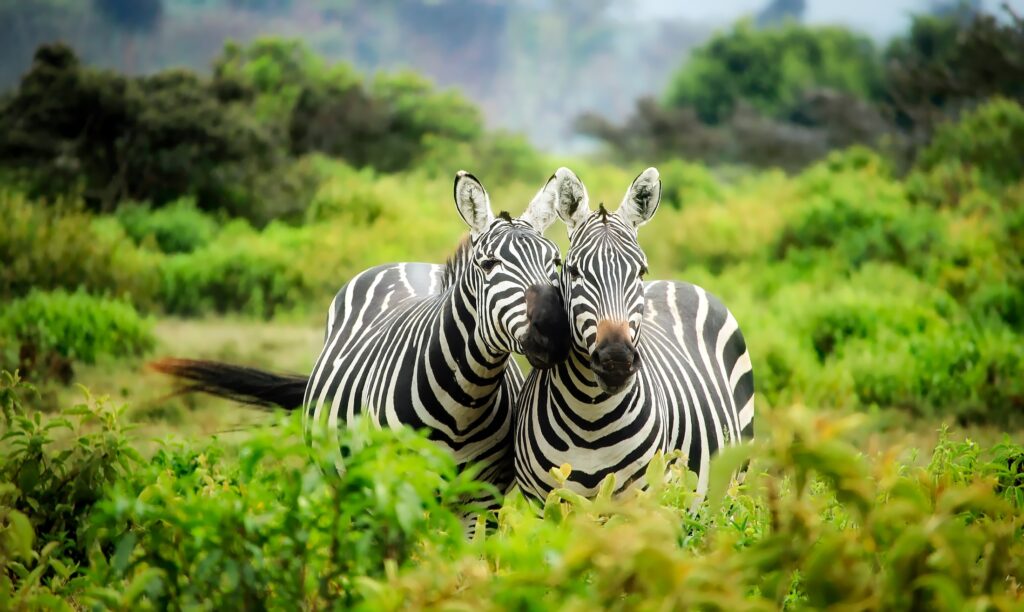Are you passionate about protecting and preserving our natural environment? In this article, we will explore the crucial topic of conservation and restoration of natural habitats. From the importance of biodiversity to the methods used in habitat restoration, this article will provide you with a deeper understanding of why preserving these ecosystems is essential for the well-being of our planet and future generations. Join us as we explore the fascinating world of nature conservation.

Conservation and Restoration of Natural Habitats
The Importance of Conservation and Restoration
Conservation and restoration of natural habitats play a crucial role in safeguarding the planet’s biodiversity and ecological balance. These efforts aim to protect the natural environment from various threats and preserve its inherent value for future generations. By actively working towards the conservation and restoration of natural habitats, we can not only protect countless species but also mitigate climate change and ensure the availability of vital ecosystem services.
Preserving Biodiversity
One of the primary reasons why conservation and restoration efforts are important is their role in preserving biodiversity. Natural habitats are home to a vast array of species, each with its unique adaptations and ecological roles. By conserving and restoring these habitats, we can prevent the loss of biodiversity and maintain the delicate balance of nature. Preserving biodiversity ensures the resilience of ecosystems, enhances their productivity, and provides opportunities for new discoveries in science and medicine.
Ecological Balance
Conservation and restoration efforts also help maintain the ecological balance within natural habitats. Each species has its role to play in the ecosystem, contributing to processes such as pollination, seed dispersal, and nutrient cycling. When one species is lost or declines in population, it can have far-reaching effects on the entire ecosystem. By conserving and restoring natural habitats, we can ensure that these ecological interactions continue to function, promoting the overall health and stability of the environment.
Ecosystem Services
Natural habitats provide a wide range of ecosystem services that are vital to human well-being. These services include the provision of clean air and water, regulation of climate, nutrient cycling, flood mitigation, and the provision of food and raw materials. By conserving and restoring natural habitats, we can protect these valuable services, which are essential for our survival and quality of life. Without intact ecosystems, we would face significant challenges in meeting our basic needs and maintaining a sustainable society.
Climate Change Mitigation
Conserving and restoring natural habitats is also crucial for mitigating climate change. Forests, for example, act as carbon sinks, absorbing and storing large amounts of carbon dioxide from the atmosphere. When forests are cleared or degraded, this stored carbon is released, contributing to greenhouse gas emissions and exacerbating climate change. By protecting and restoring forests and other natural habitats, we can help remove carbon dioxide from the atmosphere and mitigate the impacts of climate change.
Threats to Natural Habitats
Despite the importance of natural habitats, they face numerous threats that put their existence at risk. Understanding these threats is essential for designing effective conservation and restoration strategies.
Deforestation
Deforestation, primarily driven by human activities such as logging, agriculture, and urbanization, poses a significant threat to natural habitats worldwide. The clearing of forests not only leads to the loss of valuable habitat for countless species but also contributes to climate change through the release of stored carbon. It is crucial to address deforestation through sustainable land-use practices and the protection of remaining forested areas.
Habitat Fragmentation
Habitat fragmentation occurs when large, continuous natural habitats are divided into smaller, isolated patches. This fragmentation disrupts wildlife movement, limits their access to resources, and can lead to population declines and local extinctions. To counteract the negative effects of habitat fragmentation, conservation efforts should focus on creating wildlife corridors and restoring connectivity between fragmented habitats.
Pollution
Pollution, particularly from industrial activities and improper waste management, poses a significant threat to natural habitats and the species that depend on them. Water pollution, air pollution, and the accumulation of plastic waste all have detrimental effects on ecosystems. To address pollution, governments, industries, and individuals must prioritize sustainable practices, reduce pollution levels, and promote the responsible disposal of waste.
Invasive Species
The introduction of non-native species into natural habitats can have devastating impacts on native flora and fauna. Invasive species often outcompete native species for resources, disrupt ecological processes, and can lead to the decline or extinction of indigenous species. Controlling and managing invasive species is crucial to preserving the integrity of natural habitats and ensuring the survival of native species.
Conservation Strategies
Conservation strategies encompass a range of initiatives and actions aimed at preserving natural habitats and their inhabitants. These strategies focus on protecting and managing existing habitats, conserving threatened species, restoring degraded ecosystems, and raising public awareness and education.
Protected Areas and Reserves
Protected areas and reserves are essential tools in conserving natural habitats and their biodiversity. National parks, wildlife sanctuaries, and marine protected areas all play critical roles in preventing habitat destruction, providing refuge for endangered species, and maintaining healthy ecosystems. The establishment of these protected areas is often supported by legal frameworks that provide the necessary protection and management guidelines.
Species-focused Conservation
Species-focused conservation efforts aim to protect and restore habitats for specific endangered or vulnerable species. This approach involves implementing programs and initiatives that address the unique conservation needs of these species, such as habitat restoration, breeding and reintroduction programs, and genetic management. By focusing on individual species, we can prevent their extinction and positively impact the ecological communities they belong to.
Habitat Restoration Programs
Habitat restoration programs work towards repairing or recreating natural habitats that have been damaged or destroyed. Reforestation and afforestation projects restore forested habitats, wetland restoration initiatives revive crucial wetland ecosystems, and coral reef restoration efforts aim to rehabilitate damaged reefs. Conservation agriculture is another restoration technique that seeks to promote sustainable farming practices that protect soil health, reduce erosion, and enhance biodiversity.
Public Awareness and Education
Raising public awareness and promoting environmental education are essential components of successful conservation and restoration efforts. By fostering a deeper understanding of the value and importance of natural habitats, individuals can make informed choices and contribute to positive environmental change. Community engagement, advocacy, policy change, and partnerships with local communities, organizations, and governments all play a significant role in driving effective conservation and restoration actions.
Restoration Techniques
Restoration techniques involve a range of interventions aimed at enhancing the health and functionality of natural habitats.
Ecological Assessment
Before implementing restoration actions, conducting ecological assessments is crucial to understanding the current state of the habitat and identifying the most effective restoration methods. These assessments involve studying the physical and biological attributes of the habitat, as well as monitoring species abundance and biodiversity.
Habitat Enhancement
Habitat enhancement involves actively improving the conditions of a habitat to make it more suitable for native species. This may include actions such as planting native vegetation, creating water sources, and implementing erosion control measures. Habitat enhancement efforts help restore ecological functions and increase the overall resilience of the habitat.
Invasive Species Management
Successfully restoring a natural habitat often requires the management of invasive species. Techniques for managing invasive species may include physical removal, biological control methods, and the use of targeted herbicides. By controlling invasive species populations, native species can thrive and the ecological balance of the habitat can be restored.
Reintroduction of Native Species
Reintroducing native species into restored habitats is a key component of many restoration initiatives. This process involves carefully selecting suitable species and releasing them into the habitat once the necessary conditions have been restored. Reintroducing native species can help rebuild ecological interactions, restore natural processes, and improve the overall biodiversity and resilience of the habitat.
Conclusion
Conservation and restoration of natural habitats are vital for preserving biodiversity, maintaining ecological balance, and ensuring the provision of essential ecosystem services. The threats faced by natural habitats, such as deforestation, habitat fragmentation, pollution, and invasive species, highlight the urgent need for effective conservation strategies and restoration techniques. By implementing protected areas and reserves, species-focused conservation initiatives, habitat restoration programs, and promoting public awareness and education, we can make a significant positive impact on the health and sustainability of natural habitats. Through these efforts, we can secure a brighter future for both human society and the countless species that rely on these habitats for their survival.





